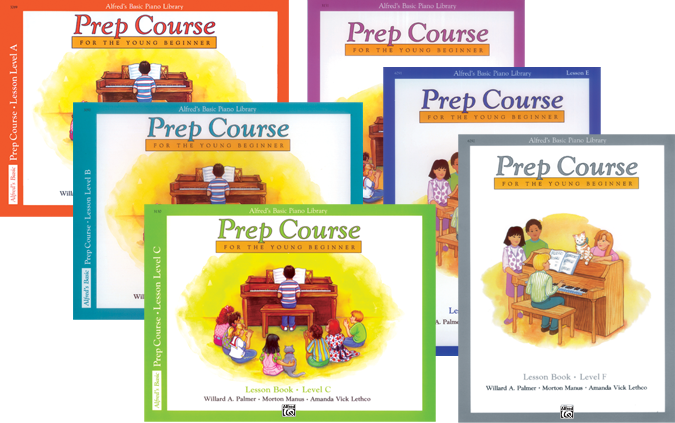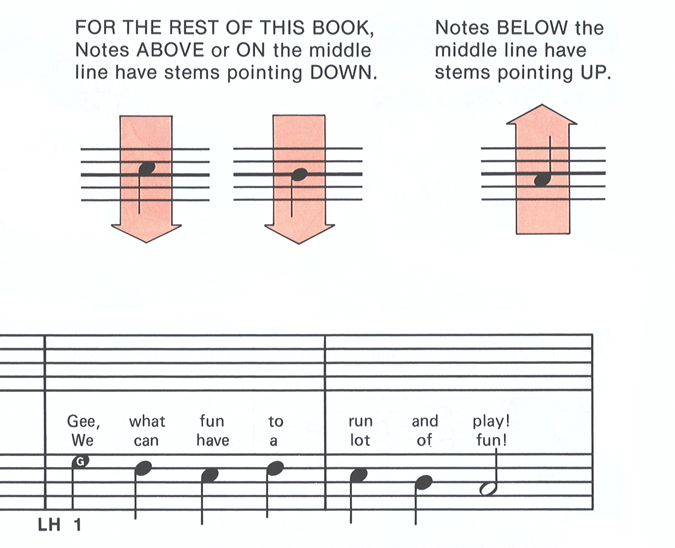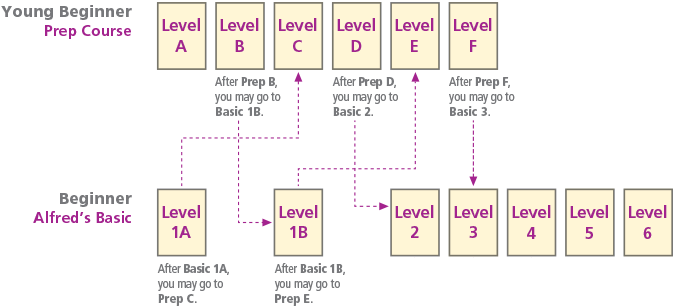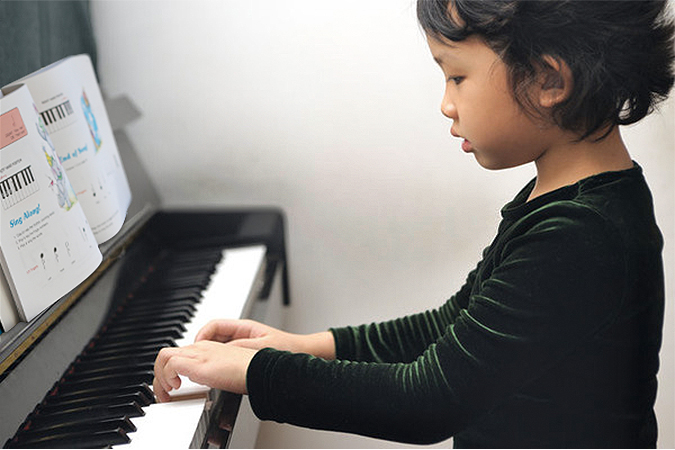A Piano Course for Young Beginners
By Willard A. Palmer, Morton Manus, and Amanda Vick Lethco
Core Books: Lesson, Theory, Solo, Technic
Supplementary Instruction Books: Activity & Ear Training, Notespeller
Supplementary Performance Books: Christmas Joy, Sacred Solos

Description
Alfred’s Basic Prep Course was written to answer the demand for a course of study designed especially for students who are five years or older. It takes into consideration the shorter attention span and smaller hands of a young beginner. Most pieces have duet parts that can be played by the teacher, a parent, or another student.
Outline of Concepts in Lesson Book A
Introduction to Playing (Pages 4–5)
Students learn how to sit at the piano, how to hold their hands, and about finger numbers. They are introduced to the concept of loud and soft tones by using more or less weight on the keys.
Black Keys (Pages 6–15)
Black keys are used for keyboard orientation and finger number recognition, while still avoiding the association of any finger number with a specific key. Tunes are played on the black keys for basic rhythmic reading and development of finger skills. Two basic dynamic signs are introduced: p and f. The student is introduced to quarter, half, and whole notes. Bar lines and measures introduced.
White Keys (Pages 16–17)
White keys are introduced in relation to the black keys.
Middle C Position (Pages 18–25)
Student is introduced to Middle C position, and practices fluent recognition of white key names through letter notes that move up or down on the page as if they were on the staff. This visual concept helps prepare the student for staff notation. New dynamic sign ( mf ) and 4/4 time signature are introduced.
C Position (Pages 26–30)
C position is introduced and used in both hands. Tuneful pieces introduce new rhythmic patterns and build technical skills. Dotted half notes and 3/4 time signature are introduced.
Bass Staff (Pages 31–35)
Student is introduced to the bass clef and the bass staff, and gets to play pieces for the left hand alone in the bass clef. Letter notes in the bass clef are gradually phased out.
Treble Staff (Pages 36–39)
Student is introduced to the treble clef and the treble staff, and gets to play pieces for the right hand alone in the treble clef. Letter notes in the treble clef are gradually phased out.
Grand Staff (Pages 40–48)
The grand staff and C position on the grand staff are introduced. The student plays pieces in C position using the left and right hands alternately. The book ends with a certificate of promotion.
What Makes Alfred’s Basic Prep Course Special?
1. New musical terms or symbols are enlarged and highlighted in a pink box. The definition is simple, precise, and clear.

2. A colorful and witty illustration accompanies nearly every piece and is related to either the title or the lyrics. These illustrations are sure to bring a smile to the student and fun to the lesson.

3. New musical symbols are identified in the music. First, the musical symbol is defined. Then there is an illustration that relates to the title or lyrics. Lastly, the new musical symbol is included in the piece.

4. The duet parts can be played by the teacher, a parent, or a more advanced student. Duet playing will help the student learn to keep a steady beat and to enjoy the fun of making music in an ensemble.

How Does the Prep Course Interact with the Basic Course?
After a student completes Prep Course, Level B, if the teacher feels the student would benefit from a faster approach, a smooth switch can be made to Alfred’s Basic Course, Level 1B.
- Find the Prep Course on the chart below, then move right to Level B.
- Follow the dashed lines and arrows to see where a switch between courses can easily be made.
- After completeing Level B, a smooth switch can be made to Alfred's Basic Level 1B.
- After completing Prep Course Level D, a smooth switch can be made to Alfred’s Basic Level 2.
- After completing Prep Course Level F, a smooth switch can be made to Alfred’s Basic Level 3.



